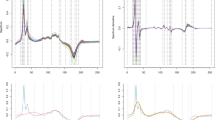Abstract
Functional networks is a powerful and recently introduced Artificial Intelligence paradigm which generalizes the standard neural networks. In this paper functional networks are used to fit a given set of data from a tensor product parametric surface. The performance of this method is illustrated for the case of Bézier surfaces. Firstly, we build the simplest functional network representing such a surface, and then we use it to determine the degree and the coefficients of the bivariate polynomial surface that fits the given data better. To this aim, we calculate the mean and the root mean squared errors for different degrees of the approximating polynomial surface, which are used as our criterion of a good fitting. In addition, functional networks provide a procedure to describe parametric tensor product surfaces in terms of families of chosen basis functions. We remark that this new approach is very general and can be applied not only to B´ezier but also to any other interesting family of tensor product surfaces.
Preview
Unable to display preview. Download preview PDF.
Similar content being viewed by others
References
S. Bu-Qing and L. Ding-Yuan: Computational Geometry, Curve and Surface Modeling. Academic Press, San Diego (1989)
E. Castillo: Functional Networks, Neural Processing Letters 7 (1998) 151–159
E. Castillo, A. Cobo, J. M. Gutiérrez and R. E. Pruneda: Working with differential, functional and diference equations using functional networks, Applied Mathematical Modeling 23 (1999) 89–107
E. Castillo and J. M. Gutiérrez: Nonlinear time series modeling and prediction using functional networks. Extracting information masked by chaos, Physics Letters A, 244 (1998) 71–84
E. Castillo, A. Iglesias, J.M. Gutiérrez, E. Alvarez and J. I. Alvaro: Functional Networks. An application to fitting surfaces. In: Fourth International Conference on Information Systems, Analysis and Synthesis, ISAS-98, Orlando, FL (1998) 579–586
E. Castillo and A. Iglesias: Some characterizations of families of surfaces using functional equations, ACM Transactions on Graphics 16(3) (1997) 296–318
J.A. Freeman: Simulating Neural Networks with Mathematica, Addison Wesley, Reading, MA, (1994)
G. Farin: Curves and Surfaces for Computer Aided Geometric Design, Academic Press, San Diego (1993)
J. Hertz, A. Krogh and R.G. Palmer: Introduction to the Theory of Neural Computation, Addison Wesley, Reading, MA (1991)
J. Hoschek and D. Lasser: Fundamentals of Computer Aided Geometric Design, A.K. Peters, Wellesley, MA (1993)
A. Iglesias and A. Gálvez: A characterization of the tensor-product surfaces (submitted for publication)
D.F. Rogers and J. A. Adams: Mathematical Elements for Computer Graphics, Second Edition, McGraw-Hill, New York (1990)
Author information
Authors and Affiliations
Editor information
Editors and Affiliations
Rights and permissions
Copyright information
© 2001 Springer-Verlag Berlin Heidelberg
About this paper
Cite this paper
Iglesias, A., Gálvez, A. (2001). A New Artificial Intelligence Paradigm for Computer-Aided Geometric Design. In: Campbell, J.A., Roanes-Lozano, E. (eds) Artificial Intelligence and Symbolic Computation. AISC 2000. Lecture Notes in Computer Science(), vol 1930. Springer, Berlin, Heidelberg. https://doi.org/10.1007/3-540-44990-6_15
Download citation
DOI: https://doi.org/10.1007/3-540-44990-6_15
Published:
Publisher Name: Springer, Berlin, Heidelberg
Print ISBN: 978-3-540-42071-2
Online ISBN: 978-3-540-44990-4
eBook Packages: Springer Book Archive




